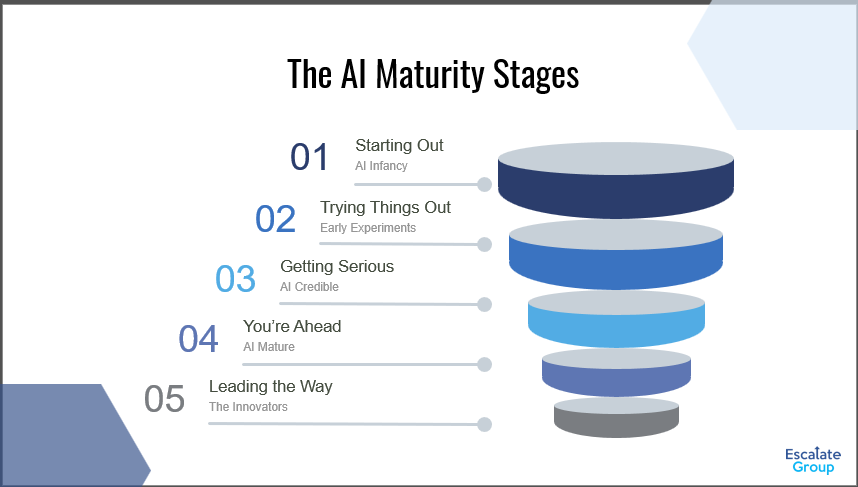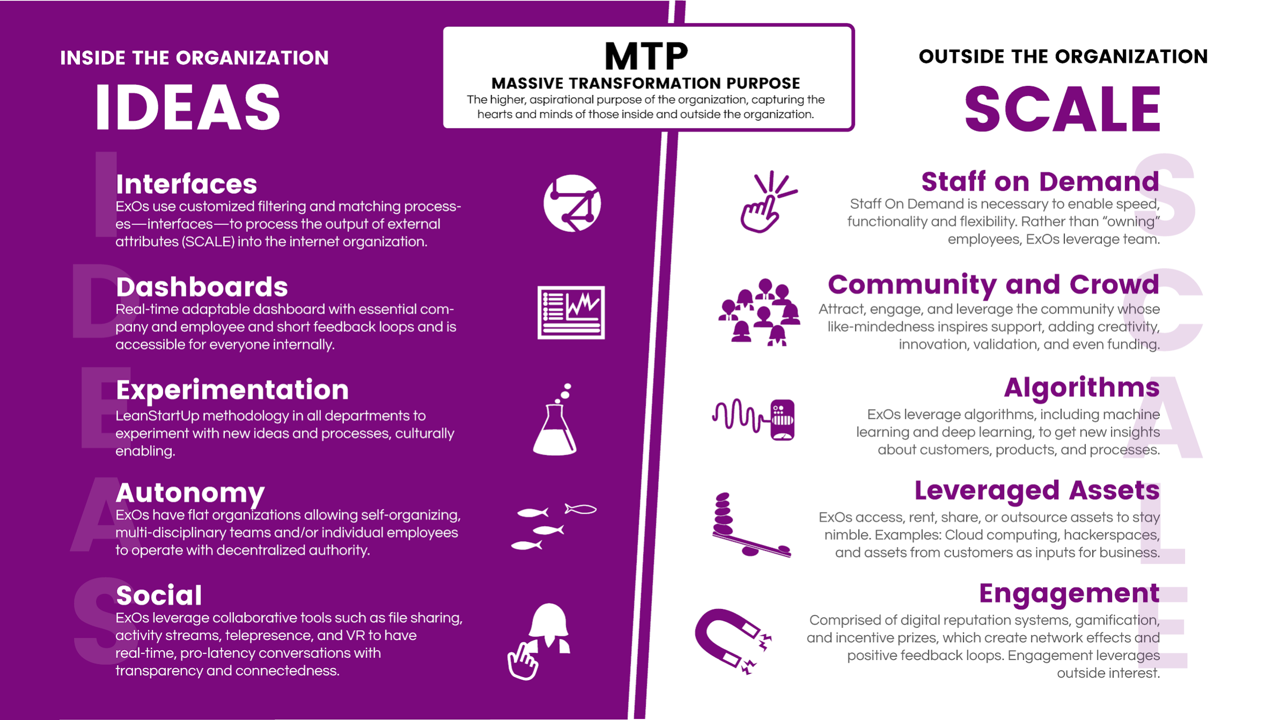How CEOs Can Lead Agile Organizational Transformation
November 20, 2024

In the changing business landscape, agility is essential for competitiveness. Organizations that can quickly adapt to change, make fast decisions, and innovate rapidly are better positioned to thrive. For CEOs and leaders, the challenge is understanding what agility looks like in practice and how it can be strategically implemented across teams, processes, and technologies.
In this article, we’ll provide actionable guidance to help CEOs identify, address, and overcome common barriers to agility. We’ll also include practical takeaways to help you engage your team in this transformative process.
Why agility is non-negotiable in today’s market
Agility isn’t just a buzzword—it’s a survival strategy in a business world defined by rapid changes, fierce competition, and the demand for innovation. Organizational studies show that companies adopting agile principles tend to see faster growth and better adaptability to market shifts. read the article: Agile organizations, by McKinsey & Company.
When we talk about agility, we’re referring to the organization’s ability to:
Respond to change quickly without sacrificing quality or performance.
Empower teams to make decisions close to the action, reducing delays and inefficiencies.
Leverage technology and data to drive innovation and optimize workflows.
In short, agility allows companies to stay competitive and future-proof. Yet, achieving true agility is challenging—it requires more than new technology or faster processes. It’s about embracing a new mindset across every layer of the organization.
With that context, we dove into four core questions designed to help CEOs uncover their barriers to agility, assess the costs of low adaptability, identify mindset shifts needed, and develop actionable strategies to unlock agility.
1. Identifying Barriers to Agility: What Holds Organizations Back?
The first step in driving agility is identifying what’s slowing you down. Through conversations with CEOs and insights from the World Café Exponential Execution Table, several common barriers emerge:
Slow Decision-Making
Decisions are hampered by layers of approval and complex processes in many organizations. Hierarchical structures often create bottlenecks, where decisions stall at multiple levels. The result? Missed opportunities, frustrated teams, and lost market share.
Solution: Consider flattening decision hierarchies. Empowering teams to make decisions at the point of need can dramatically improve responsiveness and reduce time-to-action. For instance, creating autonomous teams entrusted with decision-making authority within specific limits can significantly impact.
Rigid Legacy Systems and Processes
Outdated technology and inflexible processes are significant hurdles to becoming an agile organization. These systems are often costly and slow to adapt, which limits innovation and ties up valuable resources.
Solution: Invest in modern, cloud-based, modular technology that can be scaled and adapted as needs evolve. Embracing a digital transformation strategy in which technology enables flexibility rather than constrains it will allow your organization to adapt quickly and support long-term agility goals.
Risk-Averse Culture
Organizations often avoid risk to minimize potential losses, but overcaution stifles innovation. Teams feel pressured to stick to tried-and-true methods, which may lead to stagnation rather than growth.
Solution: Encourage a fail-fast, learn-fast culture. This means allowing teams to experiment and reframing “failure” as an opportunity to learn and refine. Building a culture where calculated risk-taking is valued makes you more likely to foster creativity and push for continuous improvement.
No Agility Metrics
Without a clear way to measure agility, it’s challenging to gauge progress or identify areas for improvement. Agility must be measurable to be manageable.
Solution: Define and set agility-related KPIs, such as decision-making speed, time-to-market, and innovation rates. This gives everyone in the organization a clear picture of what agility means in practice and encourages teams to work toward those goals.
2. The Cost of Low Agility: Why Speed Matters?
Failing to embrace agility is costly in many ways. Organizations that lack adaptability often experience:
Missed Market Opportunities
When teams can’t respond quickly to market trends, competitors can gain a significant advantage. Think of the market shifts in recent years—organizations that quickly pivoted to e-commerce or remote work capabilities outperformed those that hesitated.
Example: If your organization missed an opportunity to launch a product or service due to slow decision-making, you might have also missed out on substantial revenue. Reflect on past opportunities that didn’t materialize and estimate the cost of inaction.
Innovation Slowdown
Innovation is crucial to staying competitive, but a lack of agility can stifle creative solutions and limit the organization’s ability to respond to new challenges or trends. When teams are tied to rigid processes, creativity takes a back seat, leading to outdated products and services.
High Operational Costs
Inflexible processes and outdated technology lead to inefficiencies that increase costs and slow down operations. Agile organizations not only move faster, but they’re also often more cost-effective because they prioritize efficiency and streamlined workflows.
Employee Turnover
A rigid work environment can lead to frustration and burnout, increasing turnover rates. Talented employees, especially those who value innovation and adaptability, are more likely to leave if they feel constrained.
Loss of Market Share
Companies that fail to keep up with agile competitors risk losing market share. In a market where speed and adaptability are paramount, falling behind can have long-term repercussions for growth and reputation.
Read our article: The ability to respond quickly and flexibly gives a competitive advantage
3. Mindset Shifts: Where Change Needs to Happen?
To achieve true agility, it’s not just processes that need to change; mindset shifts are essential. Agility starts with the people who drive it, and this means transforming how individuals and teams think about challenges and opportunities.
Leadership Mindset: From Control to Empowerment
Leaders who micromanage limit agility. Instead, agile leaders focus on empowering teams, setting goals, and trusting their teams to make decisions. When leaders foster autonomy, employees feel trusted and are more motivated to take the initiative.
Middle Management: From Enforcing Rules to Embracing Change
Middle managers often resist change to maintain control, but their buy-in is crucial for agility. Managers as agility champions can help drive and sustain transformation. By encouraging middle managers to support change, organizations can ensure that agility is embraced at every level.
Front-Line Teams: From Task-Oriented to Problem-Solvers
Front-line employees are closest to the customers and the market, so their feedback is invaluable for rapid adaptation. Shift their focus from task execution to proactive problem-solving and continuous improvement.
Innovation and Risk Management: From Avoidance to Calculated Risk-Taking
Innovation requires some risk, yet many organizations prefer to play it safe. Embracing calculated risk means viewing experimentation to learn and adapt, not as a threat to stability. Encourage teams to experiment within safe boundaries.
4. Immediate Actions for CEOs: How to unlocking agility?
For CEOs looking to implement agility right away, a few key changes can make a big impact. Consider these action steps:
Empower Faster Decision-Making
Shift authority to front-line teams or create smaller, autonomous groups that can act without multiple layers of approval. This will speed up response times and empower employees to solve problems as they arise.
Invest in Adaptive Technology
Adopt scalable, cloud-based tools that support flexible workflows and real-time data sharing. By investing in tech that aligns with agile principles, you’re building an infrastructure that can evolve alongside your organization’s needs.
Launch a Pilot Agile Project
Start small by choosing a single team or department to operate under agile principles as a pilot project. Use this experiment to gather insights, refine processes, and build confidence in agile methodologies before rolling them out company-wide.
Define and Track Agility Metrics
Set measurable goals for agility—such as response time, time-to-market, or adaptability. Track these metrics to see where improvements are being made and where additional focus is needed.
Creating a Culture of Agility: Engage Your Team
Agility is a collective effort. Every team member needs to feel part of the journey for transformation to be sustainable. Here are some ways to foster an agile culture across the organization:
Involve Employees in Decision-Making
Give employees a voice in shaping agility practices. By involving them in decision-making processes, you empower them and gain valuable perspectives that can drive better outcomes.
Reward Agility and Innovation
Recognize and reward teams or individuals who embrace agile practices and demonstrate innovative thinking. Publicly celebrate quick wins and adaptability, which reinforces the value of agility in the organization.
Provide Training on Agile Principles
Equip teams with the skills they need to work in an agile environment. Training in decision-making, time management, and innovative thinking helps employees feel more confident and capable.
Continuous Feedback Loops
Agility is about constant improvement. Set up regular check-ins and feedback loops so teams can discuss what’s working, what’s not, and what adjustments are needed.
Expand this knowledge with the article: Agile is not enough by MITSloan.
Conclusion: Embracing Agility for Long-Term Success
Unlocking agility is more than a one-time initiative; it’s an ongoing commitment to building a responsive, innovative organization. For CEOs, this means leading by example, empowering teams, and fostering a culture where change is welcomed, not feared.
Start by identifying your organization’s specific barriers to agility and implement strategic shifts that will make adaptability an everyday reality. When agility becomes a core value, your organization is not only prepared to respond to change but also positioned to thrive in an unpredictable future.
Take the next step. Reflect on where agility could unlock growth in your organization and inspire your team to embrace this transformative journey. By doing so, you’re setting the foundation for a resilient, future-ready organization that’s equipped to adapt, innovate, and lead in a constantly changing world. The path to agility isn’t a one-time effort; it’s an ongoing commitment to flexibility, empowerment, and continuous improvement.
As you take these insights back to your team, remember that agility is a competitive advantage that will allow your organization not just to respond to change, but to drive it. For CEOs committed to building agile, high-performing organizations, the journey starts now.








